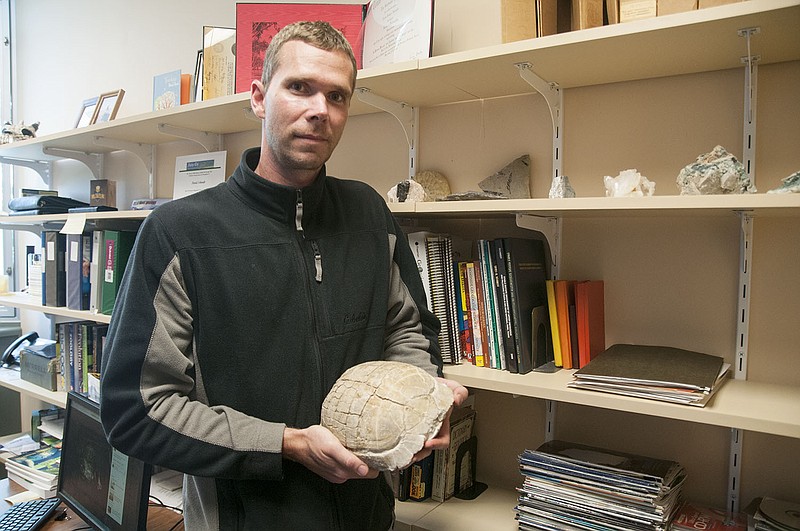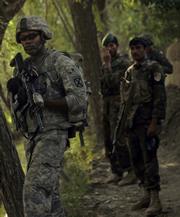Meredith Bolen, Westminster College student, said she is the kind of person who enjoys learning, research and a challenge.
So when environmental sciences professor David Schmidt offered project opportunities to his students, Bolen inquired about her options.
"She has a natural interest in natural history," Schmidt said.
That's when Bolen was paired with Gary - a 32 million-year-old tortoise shell from the oligocene era that she would dedicate her sophomore year and beyond to.
In 2012, Schmidt, then a professor at Wayland Baptist University, was on an expedition in South Dakota when a colleague stumbled on the specimen, noticing a shell-like pattern in the ground.
Schmidt brought Gary along with him when he transferred to Westminster in the fall.
First, Bolen separated the tortoise shell from a mass of rock and then asked herself, "What is it?"
The search for that answer led Bolen to her thesis, her big question: How can tortoise fossils dating back millions of years be identified using quantitative data, or rather, numbers?
Schmidt said ancient tortoise shells have been primarily researched using qualitative assessments, using shell shape, site location and layer of rock in which it was found as factors. He added that research of tortoise shells has been stagnant.
"Nobody really knows what they are because nobody really does anything with them," Schmidt said.
This is in part because tortoise shells are competing for attention with something more attractive - dinosaur discovery.
"In terms of paleontology, tortoises just aren't as sexy as dinosaurs," Schmidt said.
With her research opportunity and using Schmidt's methods, Bolen is working to develop a way in which ancient tortoise shells like Gary can be classified using measurements and other quantitative data means.
"I'm taking advantage of an opportunity others haven't," Bolen said.
Bolen and Schmidt brought Gary into the University of Missouri Veterinary School for a scan, hoping to find a skull. The skull and teeth give the most taxonomical information about an animal, Schmidt said.
There is no skull inside the shell, but it showed Bolen and Schmidt that a humerus (arm), scapula (shoulder), pelvic bones and other fragments are inside the shell.
In her sophomore year, Bolen has traveled with Schmidt to the University of Nebraska-Lincoln and Sam Noble Museum of Natural History in Oklahoma to analyze 26 ancient tortoise shells and their types - chelonia, gopherus and stylemys, comparing them to Gary.
The 26 tortoise shells led Bolen to believe Gary is a stylemys tortoise, but she wants a sample size of 100 to further explore her thesis.
Compared to the other shells, Schmidt said Gary was only in worse shape than one.
"That was really special to see how unique it was," Schmidt said.
Bolen will continue her work during the upcoming academic year, hoping go deeper into what she's started. Earlier this year, Bolen took first place in the geology/geography division of the Missouri Academy of Science competition.
"For me, it's one of the opportunities I'll look back on in my life that will be a significant moment in my life," Bolen said. "It's changed my entire college experience."
Schmidt said the research process is a way of "reconstructing life."
"It opens a window to look 32 million years into the past and see what this tortoise was doing," Schmidt said.
He will travel back to South Dakota this summer with six Westminster students for more excavating. Schmidt hopes to find tortoise and dinosaur fossils.


